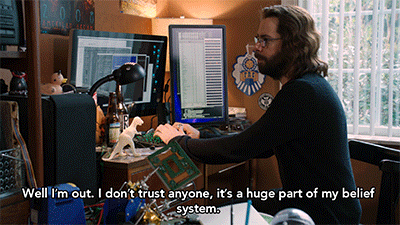Eagerly watching the clock tick down, feeling like the rightful owner of a vintage comic book or a rare Pokémon card. And then, bam! Out of nowhere, the human vs automated bidding war intensifies, and someone fires a quick successful bid faster than you can say “BUY.”
Bad news! You’ve just been sniped out of the auction by a sniper bot. Good news! You too can learn about sniper bots and the art of placing informed last-second bids during an auction. Hence, if you got sniped, this blog post allows you to walk into another auction and snipe back.
Read More: The Curtain Rises: Unveiling the Top 10 Crypto Frauds of 2023 (So Far)

The worst thing about sniper bots is they can be pretty frustrating for auctioneers since they often tend to drive the price of items higher. Thereby making it difficult to conduct a successful auction. Snipping bids negatively affects traders who rely on human intuition to create smart bidding strategies. This is because sniper bots can easily take away a hard-earned bid from a trader at the final second.
For years, people have used sniper bots on traditional marketplaces and now these tools are making a grand entrance into cryptocurrency markets and non-fungible tokens.
What is a Sniper Bot?
A sniper bot is a piece of software that uses advanced algorithms to identify suitable auctions and place bids in split seconds. While the average human being can make decisions within minutes, a sniper bot decides in milliseconds.
As such, most sniper bot users want to execute a bid precisely towards the few final seconds when the auction is closing. Particularly when rivals have already placed their bid and cannot counter a last-second offer. If the bot submits a successful bid, rivals get less than a millisecond to react and outbid.
How Does a Sniper Bot Work?
Sniper bots employ real-time data, advanced algorithms, artificial intelligence and machine learning to monitor market insights and execute swift profitable trades. Bot makers usually implement certain features with the sniper bot, such features include target prices and technical indicators. The bot keeps tabs on market movements and identifies correlations between its parameters and the market. When the right time comes, the bot quickly executes the transaction and exits the market.
Sniper bots can operate across different platforms to take advantage of price disparities and execute arbitrage opportunities. The success of a trade depends on the bot’s swiftness, the underlying algorithm and the overal market.
The algorithms should determine accurate timing, ensuring that the bot can slip in and out of transactions with the grace of a cat burglar.
Remember sniper bots don’t just throw money around like confetti; they’re calculated spenders. The amount and timing of bids depend on factors like market trends, liquidity, and historical data to determine the ideal bid amount. For a bot, the goal is not to be fast but also smart.
These bots know when to pounce, and when they pounce, they do it hard by leveraging their algorithmic prowess to predict market movements. It’s like they have a crystal ball that sees into the future, only instead of predicting lottery numbers, they’re forecasting the ideal moment to place a winning bid.
Impact on Online Auctions
Pricing
1. Impact on Pricing
High final prices on auction items as the bid process intensifies. The fact bots lockout human participants from placing counter bids, there are times when the price of items could turn out inflated.
2. Market Distortion
Using sniper bots in online marketplaces can distort the genuine value of items. This is because bots have a tendency to overshadow true demand and supply, making it difficult for buyers and sellers to gauge the fair value of items.
3. Incremental Bidding
When market participants know about the presence of sniper bots, they tend to adopt an incremental bidding strategy. As such, they gradually increase their bids without revealing their true maximum bid, thereby resulting in a prolonged bidding process.
Competition and Auction Dynamics
1. Affects human participation
Sniper bots affect equal market competition because they discourage human participants. Individuals are likely to believe they have lower chances of winning in auctions, thereby reducing diversity in markets.
2. Unpredictability
Implementing sniper bots makes online auctions unpredictable. Other participants might feel as if they are gambling due to the precise timing of bids. As such, it becomes difficult to formulate reliable bidding strategies.
3. Frustrating User Experience
Human participants often feel frustrated when they lose well-strategized auction bids due to the presence of automated tools. Individuals who lose bids in the final seconds may feel discouraged from taking part in online auctions.
Integrity and Trust
Fairness Concerns
Participants who use sniper bots may raise concerns about the fairness of an auction platform. Thereby putting the integrity and transparency of the platform into question, and potentially discouraging users.
Platform Response
Auction platforms may have to implement measures that address the negative implications of sniper bots. Such measures could be rules on incremental bidding, randomizing end times and installing anti-sniping algorithms.

Algorithmic Trading in E-commerce
Algorithmic trading in financial markets and e-commerce shares common principles. Sniper bots in online auctions are a specific application of algorithmic trading but differ in how users employ them. Here are ways to connect the concept of sniper bots to broader trends in algorithmic trading, along with highlighting major similarities and differences
Similarities
Automation
Both sniper bots and general algorithmic trading systems employ trade automation. Participants don’t need to monitor the markets all the time, hence saving both time and resources. Executing trades using pre-defined algorithms is also faster, smarter and more profitable. Besides, the bots can automate real-time bidding without necessarily having to carefully construct a trading strategy.
Speed and Efficiency
Speed is a critical factor in both algorithmic trading and the use of sniper bots. Both aim to execute transactions quickly and efficiently, often taking advantage of rapid market movements or, in the case of auctions, the limited time available.
Data Analysis
Algorithmic trading and sniper bots rely on sophisticated data and technical analysis. They process large amounts of market insights and auction data to identify patterns, trends, and opportunities, enabling them to make smart decisions.
Strategy Implementation
Both sniper bots and other forms of algorithmic trading employ predefined strategies to guide their actions. In algorithmic trading, these strategies could include trend following, statistical arbitrage, or market-making. In the case of sniper bots, the strategy is focused on placing bids strategically to secure an auction item.
More Info: Crypto Slang 101: The Ultimate Guide
Differences
Market Type
Sniper bots primarily serve online auctions, and in the financial markets, they appear prominently across NFTs. On the other hand, algorithmic trading primarily serves financial markets where assets are bought and sold at a profit. Sniper bots are convenient for placing bids on goods during an auction process.
Objectives
The goals of sniper bots and algorithmic trading differ. The motive behind sniper bots is to win auctions within a predetermined budget. As such, sniper bots aim to increase efficiency when strategizing and placing bids. On the other hand, algorithmic trading seeks to capitalize on price differences to make a profit and is particularly popular across the retail industry.
Risk
Both algorithmic and sniper bots involve a level of risk, however, the nature of risks differ in both. Sniper bots face two types of risks, not winning a bid or paying higher than you’d intended in an intensive bidding war. For algorithmic trading, volatility, operational and liquidity issues are some of the risks.
Challenges and Concerns
Sniper bots execute smart trades at extremely high speed, giving users a significant unfair advantage in terms of price discovery and order execution.
Furthermore, high-frequency trading by sniper bots could create fragmented markets where only participants with advanced algorithms to thrive.
The use of automated trading can easily manipulate the market by creating artificial demand or volatility, which may act as a market trigger. Front-running other market participants are common and bid manipulation has become commonplace across cryptocurrency and NFT markets.
Making sense of bot trading may pose a challenge to regulators and traders as they attempt to figure out the motivation behind specific trades.
In most cases, small investors may find it difficult to compete against automated trades. Thereby creating a less competitive environment comprising bots and human participants who believe the system is rigged against them.
Methods for Detecting Sniper Bots
Behavioural Analysis Bot Detection
Analyzing normal user behaviour can help identify patterns of automated trading. Unusual behaviours including rapid and repetitive actions, unusual trading frequencies, or consistent high-frequency trading may signal the presence of a bot.
Machine Learning Algorithms
Machine learning algorithms can learn to recognize patterns associated with automated trading. These algorithms can analyze large datasets to identify anomalies and predict whether certain participants are bots. As such, machine learning systems can serve as a valuable bot detection mechanism.
IP Address and Geolocation Tracking
IP addresses, devices and geolocation monitoring can help detect unusual patterns. A good example is one IP address executing large numbers of trades in a short duration. Bots also have a tendency to multiply IP addresses or exhibit unusual geographical patterns.
Analyzing device attributes, e.g. operating system, browser type and device settings. These attributes can create unique fingerprints for each user. Deviations from typical device fingerprints may indicate the presence of a bot.
Completely Automated Public Turing Tests to Tell Computers and Humans Apart (CAPTCHAs). Implementing CAPTCHAs or Turing tests during critical transactions can help set apart a human being from an automated bot.

The Future of Automated Trading
Current forecasts for algorithmic trading indicate an $18.8 billion valuation by 2024. As markets become more complex, and the data sets required to make smart decisions continue to expand, trading systems are becoming more sophisticated.
Individuals and institutions are looking towards advanced algorithmic trading to reduce human intervention when monitoring markets and executing trades. As such, the coming years are likely to see an increase in the number of bots on online marketplaces. Current trends across bot trading include implementing artificial intelligence, machine learning, big data and emerging retail technology to boost their algorithms and make even smarter trades.
Therefore, the algorithmic trading industry is likely to see an amalgamation of different strategies, as traders seek to maintain profitability in a rapidly changing landscape. Besides, more NFT traders are likely to adopt sniper bots and algorithmic trading so as to gain a competitive advantage in the market.
Conclusion
The advent of sniper bots has undeniably transformed the landscape of online marketplaces, cryptocurrencies, and NFTs, ushering in both opportunities and challenges.
As explored in this article, these automated tools wield significant power in securing limited-edition items, driving up cryptocurrency prices, and influencing NFT auctions. The implications are vast, ranging from economic consequences for individual buyers and sellers to broader considerations about market integrity and fair competition.
While sniper bots offer efficiency and speed, they also raise ethical concerns and pose threats to the principles of fair play within online markets. The ability of these bots to exploit time-sensitive situations and manipulate prices demands careful consideration.
Striking a balance between technological innovation and the preservation of fair competition is crucial. Policymakers, platform developers, and market participants must devise strategies to mitigate the impact of sniper bots while still fostering an innovative environment.
More on Frauds and Scams:
- Celsius Network Founder Claims Innocence in Crypto Fraud Fiasco
- 5 most significant crypto events in 2023 – No3 will shock you the most
- Binance launches an anti-fraud campaign after the pilot launch in Hong Kong
It is imperative to cultivate a regulatory framework that safeguards the interests of all participants in online markets. This includes implementing measures to detect and prevent sniper bot activity, promoting transparency in transaction processes, and ensuring equal access to opportunities for both individual buyers and larger entities. By doing so, we can harness the benefits of technological innovation without compromising the fundamental principles of fairness and equitable competition.
Disclaimer: All materials on this site are for informational purposes only. None of the material should be interpreted as investment advice. Please note that despite the nature of much of the material created and hosted on this website, HODL FM is not a financial reference resource and the opinions of authors and other contributors are their own and should not be taken as financial advice. If you require advice of this sort, HODL FM strongly recommends contacting a qualified industry professional.







